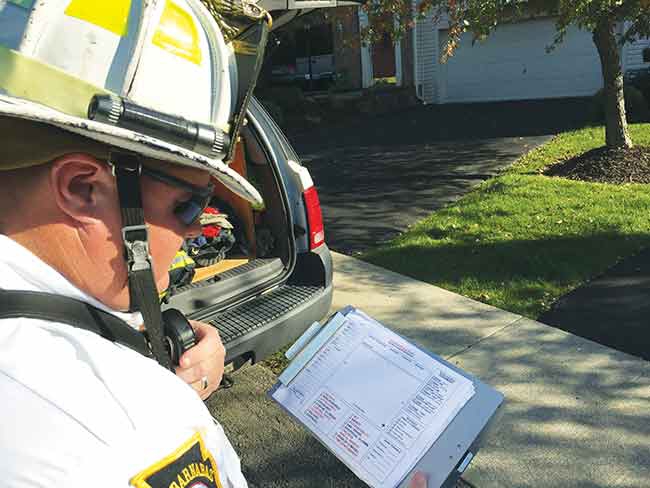
Timbits: October 2015
Tim Llewellyn
Features Equipment Hot Topics CommunicationMost firefighters in Canada and the United States agree that the numbers of big calls are dwindling, or are few and far between. While most departments are experiencing a slight increase in call volume, the number of significant fire calls is declining. The majority of firefighters are volunteer, or on-call, so there are even fewer chances they will respond to large fires.
 A homemade worksheet can include a checklist of initial tactical assignments as well as an area to sketch the incident scene. Training experts tell us that skills and detailed memories are perishable unless used frequently. Tim Llewellyn makes the case for using tactical worksheets as reminders to perform or assign tasks
A homemade worksheet can include a checklist of initial tactical assignments as well as an area to sketch the incident scene. Training experts tell us that skills and detailed memories are perishable unless used frequently. Tim Llewellyn makes the case for using tactical worksheets as reminders to perform or assign tasksAt the same time, firefighters face increased complexity in the nature of modern-day fire responses and ever-changing technical expertise needed for mitigation. With fewer incidents through which to gain experience, how can firefighters keep track of the necessary tactics?
A solution is tactical worksheets. Even though these worksheets, also known as command boards, are easy to use and inexpensive to build or obtain, not all fire departments use them.
Training experts tell us that skills and detailed memories are perishable unless used frequently. We all like to believe that we are competent and well-trained experts who can handle every incident we face, but do we really remember every detail of what decisions and tactical assignments should be made at every type of incident? Tactical worksheets can help us!
There are many types of tactical worksheets that can be purchased, but I’ve found that home-made ones are the most efficient and widely used; if you made it, you are more likely to use it. To create a general worksheet you will need a small dry-erase board, a label maker or vinyl adhesive letters and numbers, and a roll of thin, automotive pin striping. Incident-specific worksheets are best created on a computer, printed and covered with dry erase-capable lamination sheets. Grease pencils work better than dry-erase markers in wet weather. Using plain paper makes it easier to add the checklist to the complete report following the incident, but it will not be weather resistant.
The commercial versions of command boards are well laid out, well-constructed and durable, but they sometimes cram too much information into too small of a space, and can require a lot of writing. It seems that some of these boards were created by and for larger municipal fire departments that have the luxury of staffing a chief’s aide position at the incident-command post. Most incident commanders do not have the time or the ability to fill in small information blocks. And, with the limited staffing that most departments face today, chief’s aide positions are not a reality at most command posts.
The tactical worksheets with the simplest layouts contain only the main tactical objectives for the incident, listed in a preferred order of occurrence with a check box to the side to indicate if it has been addressed. This worksheet can also double as an initial-accountability system; beside each task, simply write the unit designation, location and the time it was assigned. Some of the major items to include for a structure-fire worksheet are size-up, water supply, 360-degree view, primary search, attack line, back-up line, control ventilation, utilities and salvage.
Remember, a tactical worksheet serves as a reminder to perform or assign a recommended or required task, so if you’re going to make one for your department, gather input from other officers and firefighters. Also include the main tactical points that you intend to put into practice. Worksheets such as these are wonderful memory aides for technical-rescue incidents in order to address all of the complexities involved with those specialties. If you choose to make your own worksheet, do a quick Internet search to look for good ideas. Fire departments often post their worksheets online.
Once you’ve made your tactical worksheet, it is imperative that you begin using it during training or live incidents. It is one thing to sit at a desk in an air-conditioned room and read over the bullet points and scribble notes; it is a whole different story to stand in a street wearing turnout gear with your portable radio blaring in your ear, sirens and horns approaching and firefighters running by asking you for assignments. You must be able to read and comprehend the worksheet, give commands, receive feedback, mark and write on the sheet appropriately and legibly and then move on to the next item. It does take practise and can add a bit of a challenge for any incident commander, but tactical worksheets do offer advantages; give them a try!
Tim Llewellyn is a firefighter for the Allegheny County Airport Authority in Pittsburgh, Pa., and an instructor for a number of fire academies and training faculties. llewellyn.fire@gmail.com
Print this page